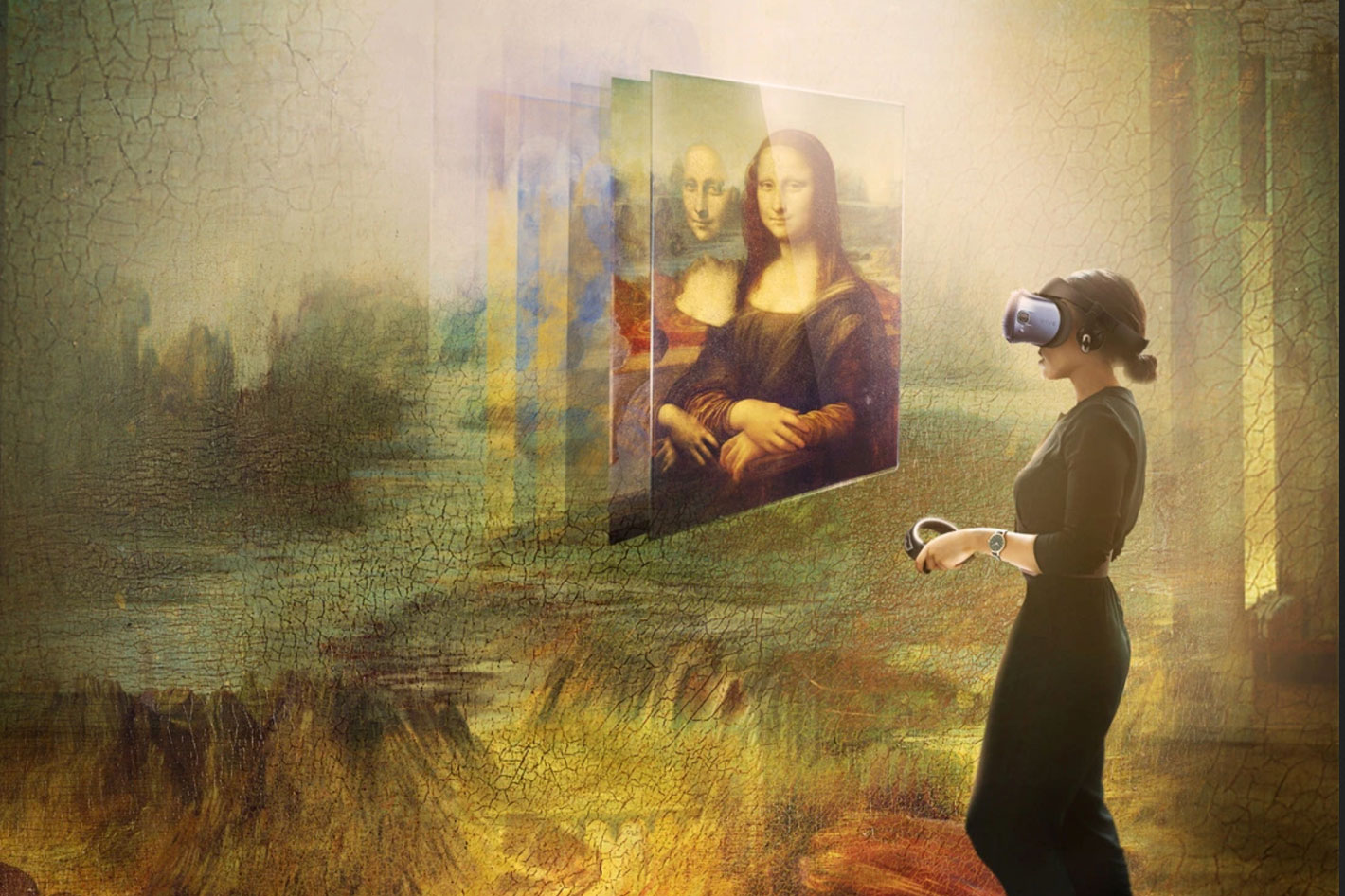
Seen by more than 20,000 people each day, before the pandemic, the Mona Lisa is kept permanently in protective casing due to its fragility, at the Louvre’s Salle des États. To commemorate the 500th anniversary of the death of Leonardo da Vinci in France, the Louvre prepared a unique retrospective of da Vinci’s artistic career, from October 24, 2019 to February 24, 2020 in the Napoléon Hall.
As part of this landmark exhibition, the Louvre presented its first virtual reality (VR) experience, in partnership with HTC VIVE Arts and Emissive, which brought to life the story of the Mona Lisa, da Vinci’s most famous masterpiece. The exhibit is now gone, but fortunately an extended home version of the VR experience is available for download through VIVEPORT and other VR platforms, including mobile VR on iOS and Android, for audiences across the globe.
Through VR, the Louvre was able to feature this world’s best-known painting in its retrospective of da Vinci’s work, while offering visitors a chance to have a heightened personal encounter with the artwork as was never before possible. Alone with the masterpiece in the virtual space, the visitor could see the vivid details of this celebrated oil painting, including the texture of the wood panel seen through the paint layer, and the marks where the panel once cracked and was masterfully restored.
Mona Lisa: Beyond the Glass has been created in close collaboration with the Louvre’s curatorial team, as part of the Louvre’s mission to find new ways to reach audiences both inside and outside of its walls. Inside the museum, the VR experience intended to complement and enhance visitors’ engagement with da Vinci and the masterpieces that are on display through creative storytelling that reveals more than the eye can see.
In addition to the content available in the exhibition version, the home version also provides global audiences with an opportunity to experience a virtual visit to the Louvre Museum, entering through the iconic Pyramid before visiting the Grand Galerie and seeing all of the da Vinci paintings in the Louvre’s permanent collection.
The Virtual Reality experience combines moving image, sound and interactive design to create a deeply engaging way to immerse visitors in the world of da Vinci’s as well as bringing to life decades of conservation research and data, including infrared scans. Transporting the viewer through time, the experience unveils insights into how the artwork was originally created, how it might have looked in the past, and how it has changed over 500 years due to exposure to light and humidity. The narrative component of the experience dispels some of the many myths about the famous Mona Lisa by revealing more about her identity, providing additional details about how her appearance indicates her social status.
“The experience we developed is targeted for both the curious mind and the art connoisseur. At the end of the virtual reality session, visitors will understand why Mona Lisa is the world’s most famous artwork. This VR experience is also a way to create a strong emotional connection with the character of Mona Lisa.” Says Fabien Barati, Emissive’s CEO.
Mona Lisa: Beyond the Glass is a clear example of how Virtual Reality is a very efficient way to engage people. A VR headset – a PCVR headset like the HP Reverb G2 is ideal – , the best way to really get immersed into the exploration of the title, offers a voyage that both entertains and opens culture to a broader audience. Three is even space for emotions, as when la Joconde invites you to board one of Leonardo’s flying machines and fly over the valleys surrounding her “loggia”.
The Mona Lisa: Beyond the Glass joins titles as The Scream, a VR documentary inside a madman’s painting, based on Edvard Munch’s famous painting, or Il Divino: Michelangelo’s Sistine Ceiling in VR to clearly demonstrate the potential of Virtual Reality to develop new narratives that expand the options available to creatives aspiring to share their stories and projects through a new medium.
